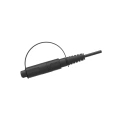Understanding Fiber Optic Connectors

Fiber optic connectors play a crucial role in ensuring reliable and efficient communication through optical fibers. These connectors facilitate the connection and disconnection of fibers, ensuring minimal signal loss and maintaining signal integrity. Given their significance, it is important to understand how to evaluate the quality and performance of fiber optic connectors to ensure optimal network performance.
Physical Inspection and Analysis
The first step in judging the quality of fiber optic connectors is to perform a physical inspection. This involves examining the connector for any visible defects or damage that could affect its performance. Look for scratches, chips, or bent pins, as these can lead to signal loss or poor connection. Additionally, evaluate the cleanliness of the connector, as dirt, dust, or oil residue can hamper signal transmission. Use a microscope or magnifying tool for a detailed inspection to ensure all components are intact and aligned properly.
Insertion Loss and Return Loss Measurements
Insertion loss refers to signal power loss when transmitted through a connector. A low insertion loss indicates a higher-quality connector, as it ensures efficient signal transmission. Use an insertion loss meter or optical time-domain reflectometer (OTDR) to measure and evaluate the insertion loss of the connector. Similarly, return loss measures the amount of reflected signal back into the source. High return loss can indicate poor connection or lack of alignment. Optical power meters and OTDRs can effectively measure return loss and help assess the connector's performance.
Durability and Environmental Testing
Durability is another crucial factor in evaluating fiber optic connectors. Connectors should be able to withstand repeated mating cycles without any significant degradation in performance. Conduct environmental testing to assess the connector's resistance to temperature variations, humidity, and mechanical stress. Expose the connectors to extreme conditions to imitate real-world scenarios and evaluate their performance under such circumstances. This testing helps determine the reliability and long-term viability of the connectors.
In conclusion, the quality and performance of fiber optic connectors can be judged through physical inspection, insertion loss and return loss measurements, and durability and environmental testing. By thoroughly evaluating connectors using these methods, one can ensure the efficient and reliable transmission of optical signals, guaranteeing optimal network performance.



